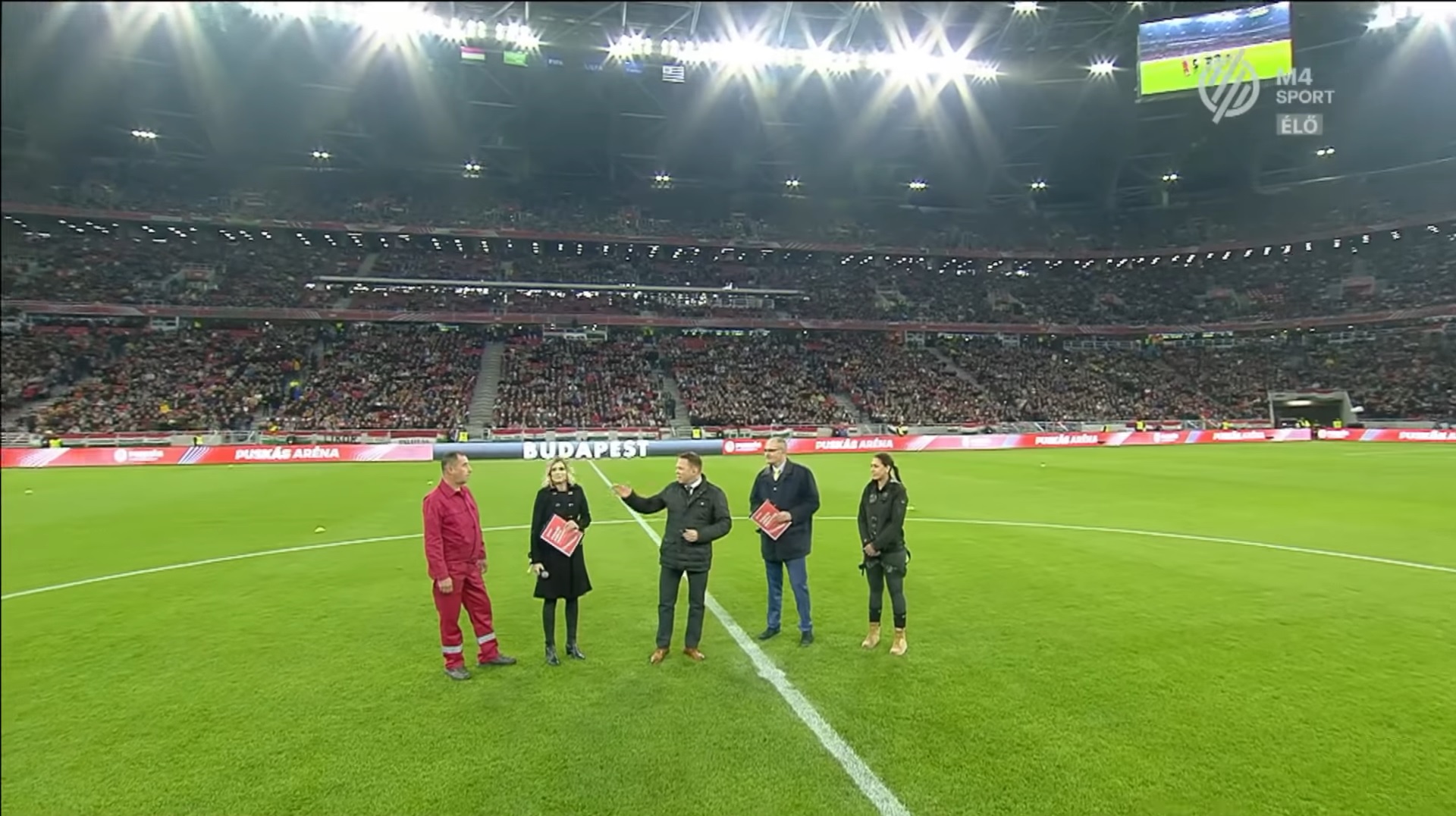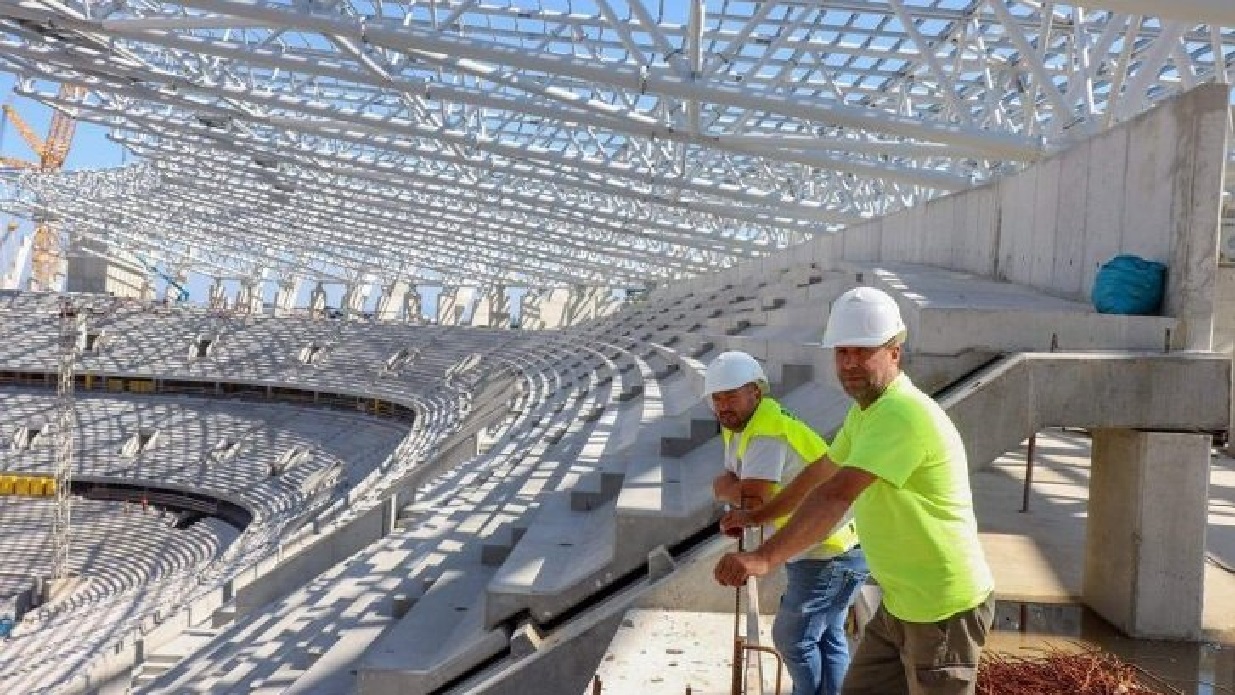A structural carpenter from Szeklerland worked for several months with his colleagues on the construction of the new Puskás Arena in Budapest. Béla Bálint from Alsófalva/Ocna de Jos (a village in Hargita/Harghita County with 1,500 inhabitants, 95% of whom are Hungarian) described their work briefly in front of 60,000 spectators during the arena’s opening ceremony in November. Last week, he talked in more detail about the project and about his profession in general on Transylvanian Hungarian Television.

“I think the one who loves this profession, leaves a part of his heart in each building. I feel the pride rise up in me when I’m only passing by the Arena. Standing inside was such a huge experience, which I can’t even describe with words.”
– Bálint stated last week, sharing his feelings about the new Puskás Arena and the carpenter profession in general on Transylvanian Hungarian Television’s show “Mozaik.”
2.5 years and 300 workers
Forty percent of the new Puskás Arena’s structural engineering was done by the workers of the Szekler company. As the leader carpenter on the construction, Bálint helped direct the 2.5-year-long project in which involved altogether around 300 people.

Three decades of carpentry
The 48-year-old professional first arrived to Hungary for work as a teenager almost thirty years ago in 1991. During the upcoming years, he and his fellow Szekler co-workers – many of them even from the same village of Alsófalva – worked a lot and improved their carpentry skills at the same time. Because of this, they started to got involved in bigger construction projects as well, for example, several shopping centers in Budapest (Westend Shopping Center, Arena Plaza, etc.) and the Palace of Arts (MÜPA) in Budapest, among others.
Attachment to home
According to Bálint, he is the kind of person who loves his profession and who never regrets choosing it as a youngster. And despite of the fact that he has to spend a lot of time away from his home due to work, he never wants to leave his home village for good:
“I never wanted to leave. I’m an Alsófalva inhabitant and I like to live there.
It never even crossed my mind to leave my village for good. But it is true that we leave for work. Our ancestors had to leave, and if we want to create higher living standards for ourselves, we also have to do that,” he said.

Difference between the Hungarian and the Transylvanian construction market
During the last three decades, he both worked in Hungary and in Transylvania – for eight years close to the border, mainly in Bánság/Banat and Nagyvárad/Oradea. According to him, even though the difference between the two markets is not as huge as it used to be in the beginning of the 90s, it still exists: “All the key players in the Transylvanian construction industry have some kind of connection to Hungary. In Romania, the technology, the quality and the work organization have to be improved. The most important is the work organization. Within our company, we even have a saying referring to this:
“The head figures it out, the hand gets it done.”
New generation
At the end of the interview, Bálint shared with the viewers that he and his co-workers permanently train youngsters who want to become carpenters and added that most of these applicants are from Szeklerland.
Update: Szekler club owner in Puskás Arena promo video
Title image: Béla Bálint, lead carpenter of the Puskás Arena’s construction in Transylvanian Hungarian Television’s studio. (Photo: Erdély TV)